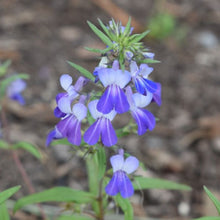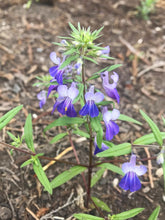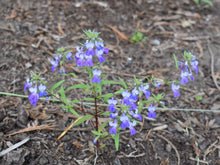Collinsia grandiflora
Don't be fooled by the common name; Large-flowered Blue-eyed Mary is no giant. But its floral display is truly magnificent and attracts many native bees, including bumblebees, butterflies, and hover flies. Plus, the adorable, dainty flowers flaunt a sweet blue hue that is rare in NW native gardens. Be sure to plant in swaths or drifts for the best visual appeal and pollinator punch.
- Plant type/canopy layer: annual herbaceous plant
- Size at maturity: 8"-18" tall
- Light requirements: full sun to partial shade
- Moisture requirements: very dry to moist soil
- Bloom time: April - June
- Growth rate/ease: fast growing, easy to grow
- Wildlife support: attracts many native bees, including bumblebees, butterflies and hover flies
- Native habitat/range: found in dry, rocky or upland areas from sea level to mid-elevation across the Pacific Northwest, but most common in western OR between the Cascades and the Coast ranges. Portland Plant List - yes.
- Special features & uses: deer resistant; heat and drought tolerant; landscape uses include pollinator gardens and meadowscapes
Gardening with Large-flowered blue-eyed Mary: Usually found in full to mostly sunny sites with dry, rocky, well-drained soil such as meadows, upland openings and forest margins. It is incredibly cold and heat tolerant, as well as drought tolerant and deer resistant. A true annual, the plant dies after its bloom. But be sure to leave it for several weeks to develop and shed seeds for next year.
Seed Sowing Instructions: You can sow in a plug tray, growing flat, small containers or directly into a well-prepped garden bed. Sowing in a controlled environment may allow you to monitor and take care of plants better, though many people have success with direct sowing if the area is clear of competition from grass and other plants.
Scatter seed on loose, weed-free soil Sept - Nov (ideally) or early spring, so that seeds will benefit from seasonal rains. Gently rake in to increase seed-to-soil contact, but be careful not to cover the seed with more than 1/4" soil. Seeds will germinate within a couple weeks and grow slowly throughout the winter, and much more quickly in the spring. If planted in spring, be prepared to provide more frequent supplemental water in the summer and expect smaller plants.
Photo Credits: Nikkie West, Sparrowhawk Native Plants






